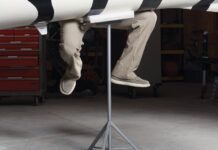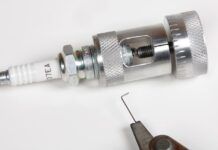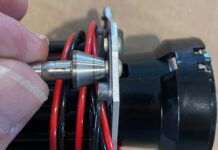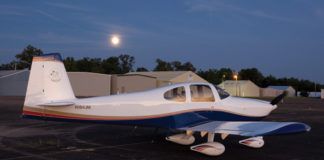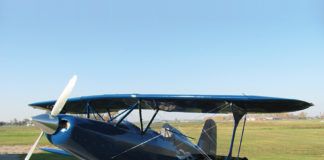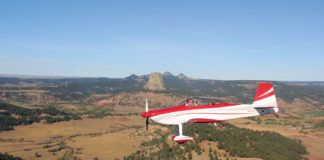As I start this article, we are between Baker, Nevada, and Hinckley, Utah, which is quite remote. We are stranded “MOG’’ (motor home on ground) with a blown inner dually tire awaiting rescue by my now cherished Good Sam roadside assistance plan. I always carry a lot of essential tools, necessities and spares for both the airplane and the motor home, but a jack capable of lifting the motor home isn’t one of them and is rarely provided by the vendors. I like to be prepared and self-sufficient, but I am also at an age and station in life where a roadside assistance plan is worth the money.
This event I am experiencing and the waiting time it is imposing serves as a segue to write about favorite maintenance tools and equipment as a follow-on to last month’s favorite building tools. Like the last one, this is not intended to be a complete list of everything required to properly maintain an Experimental/Amateur-Built aircraft. And, like any discussion of tools, opinions will vary widely and I expect that in advance.
Obviously, some tools are used in both construction and maintenance and I have applied those to either list as seemed most appropriate. Everything on the list should be readily available. Last month I focused, when appropriate, on part numbers from Aircraft Spruce. This month I will focus primarily on Aircraft Tool Supply—though it’s worth noting that Spruce carries many ATS tools and you might find value in reaching your free-shipping threshold. I have no personal connection to either vendor except as a satisfied customer and most items will be available from several sources.
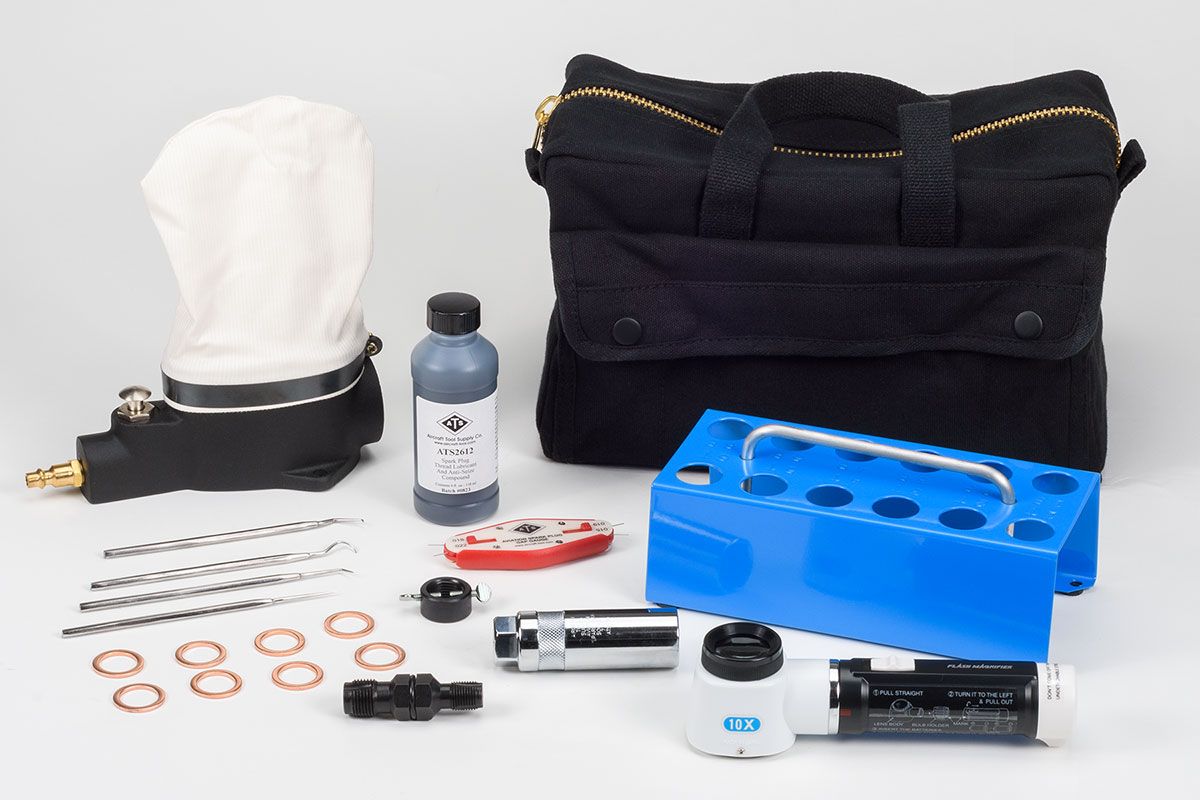
1. Aircraft Tool Supply Spark Plug Field Kit
Available from ATS, p/n SPK001 ($199.95). We’ll start with a package of tools and accessories related to the inspection, cleaning and servicing of spark plugs. (Assuming, of course, that you run conventional aircraft plugs, which a few of us still apparently do.) This tool package includes a pneumatic plug cleaner, spark plug tray, lighted inspection magnifier, anti-seize lubricant, copper plug gaskets, thread chaser, plug socket and other tools for cleaning and gapping plugs. The
components of the kit can be purchased à la carte, but the package combines everything in a handy canvas bag at an attractive price. A terrific starter package for new repairmen.
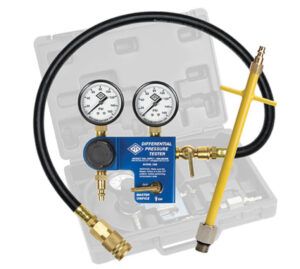
2. ATS Differential Pressure Tester Kit
Available from ATS, p/n 2EM-KIT ($165.95). These products are very simple in design and science, with high component quality. Proper training is essential. This kit provides a quality harness and a handy port extender in a durable case to protect everything. A compression tester is an essential piece of equipment for anyone serious about DIY maintenance and inspection, and not a candidate for cheap products.
3. ATS Magneto Synchronizer (Aviation Deluxe)
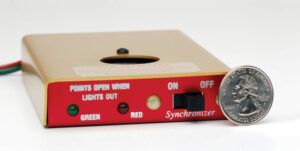
Available from ATS, p/n LED52 ($76.95). This handy device, commonly referred to as the “buzz box,” is an essential part of any repairman’s tool kit for magneto-ignited engines. It isn’t the only way to check magneto timing and synchronization, but is likely the most common. This clever device is relatively simple to use and includes instructions. However, dual instruction by experienced experts with the device is highly recommended. An instructional reference worth noting is this video by Paul Dye as part of our Firewall Forward series.
4. ATS Heavy Duty Multimeter
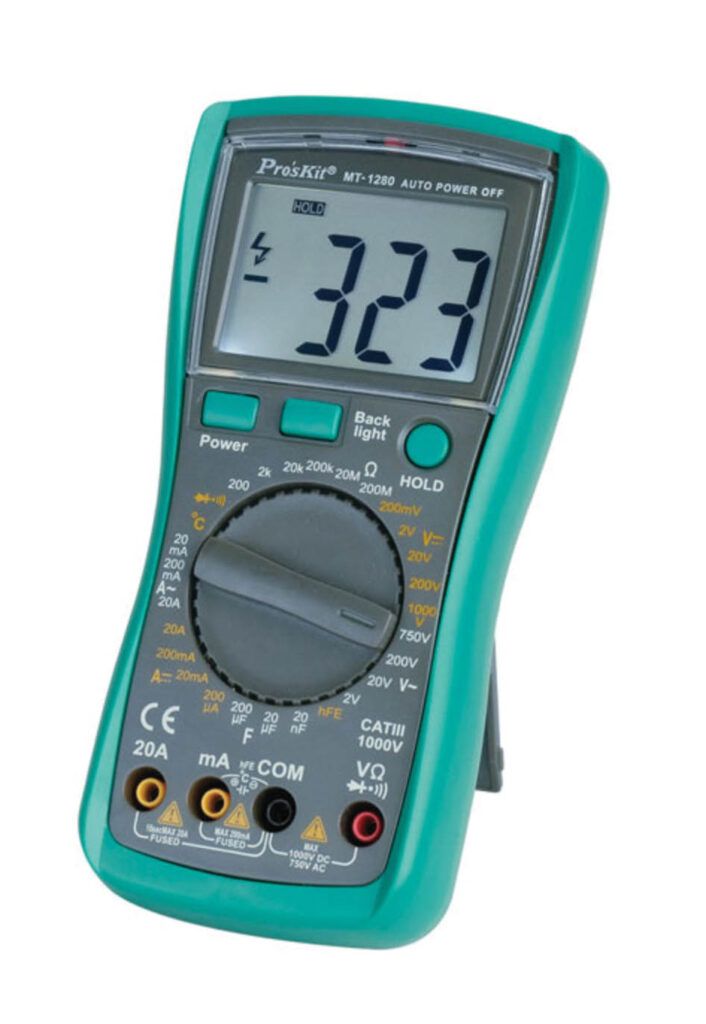
Available from ATS, p/n MT-1280 ($44.95). A quality multimeter is essential for both building and maintaining along with hundreds of other household/vehicle uses once one learns to use one properly. Most uses are actually pretty basic like voltage and continuity. In my opinion, durability is far more important than fringe capabilities. I once owned a Radio Shack model that was pretty expensive for the time but, after falling off a table, sounded like a musical maraca when shaken (which was the only function it continued to provide.)
Having one quality multimeter for the shop and a cheapo for the road kit allows one to be able to periodically cross-check the two for accuracy. Harbor Freight has a $5 basic model they sometimes give away on a coupon. It has actually tested well for accuracy, less so for durability. A couple of useful accessories for any multimeter are alligator clip tips for the leads and a set of 3-foot jumper leads.
5. 7/8-inch Socket with Cutout
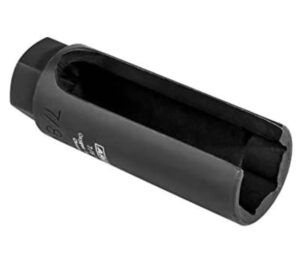
Available from various sources including Amazon ($10.99). This item, also known as an oxygen sensor socket, will become cherished by any repairman who’s ever spent hours removing and reinstalling baffling to remove aft/upper spark plugs. The cutout was originally designed to facilitate the wires of oxygen sensors, but lucky for us, those sensors require the same 7/8-inch socket that most aviation spark plugs require. The magic is that in tight spaces, usually confined by baffling, the gap allows the socket to slip sideways onto the upper insulator part of the plug and then easily slide the socket part onto the plug base. Then the machined male part of the socket can be used with a 7/8-inch wrench to remove or install the plug. Just remember to do the crow’s foot calculations as appropriate for proper torque for reinstallation.
These sockets come in both long and short with both narrow and wide slots. Long and wide respectively are what are required for this application. I don’t profess to be an expert mechanic but this trick was shown to me by a very experienced expert and trust me, you’ll love it as I do. Very handy time-saver in any tool or road kit.
6. Tire Bead Breaker

Available from Aircraft Spruce, p/n AB-1 ($243.95); there are cheap versions on Amazon. A bead breaker is handy to have, but in my opinion isn’t something worth a large investment. I have used a cheapo for years from Harbor Freight that works great but has been discontinued. If I were shopping today, I’d try the one Amazon sells and send it back if I wasn’t satisfied. I would then purchase the ACS model. I know pro mechanics who just use their girth and work boots to break the bead (separate the tire from the rim), but apparently I don’t weigh enough, have large enough boots—or know the correct body English or swear words to be successful. A breaker won’t be used often but is very nice when needed.
7. Anti Splat Aero Ultimate Propeller Wrench
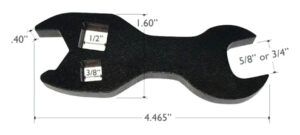
Available from Anti Splat Aero ($69.99). Anyone who has removed or installed a constant-speed propeller with just a standard open-end wrench knows how tedious and frustrating the process can be. This “ultimate prop wrench” truly makes the process much easier. It would take half an article to describe all of the design features, but those interested can read more and even watch a video of the tool in use at the company’s website: www.antisplataero.com. Not cheap, but very well designed and machined from quality materials. Its small size makes it easy to toss into a road kit.
8. Ultrasonic Jewelry Cleaner
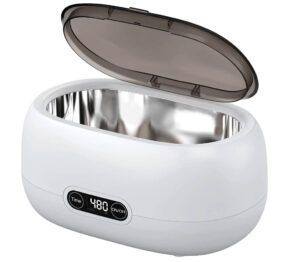
Available from various sources (including Amazon) and at various price points (typically around $40–$50). The primary purpose of this device for an aircraft repairman is to conveniently clean fuel injectors. With some Hoppes #9 firearm solvent or equivalent, these machines are ideal for that purpose. However, with experience, there are several other items like soiled hardware or small tools, even small engine parts and pieces like carburetor jets and so on. In a worst-case scenario, if a significant other is causing pushback on the shop project budget, one can clean their jewelry as a peace offering.
9. Metrinch Sockets and Wrenches
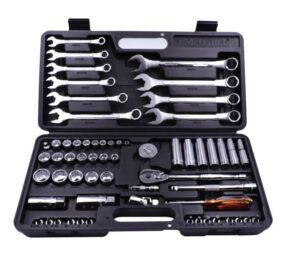
Available from Metrinch ($219.99 for the 62-piece set). Years ago, I bought a Socata aircraft for my son to use for his flight training. It was a great aircraft in many ways but as a European airframe with a U.S. powerplant, it had a curious combination of both metric and SAE tool requirements. On a suggestion from a Socata forum, I purchased my first Metrinch tool set. The tools were designed and manufactured in Germany, are very high quality and feature a lifetime warranty. I won’t go into great detail about the tech, but suffice it to say that each component uses a rounded scalloped gripping surface instead of traditional angled facets. This allows each component to be sized for both a specific metric and SAE size and work well with either. There are other advantages as well such as that the design works better than conventional tools with damaged fasteners.
Years ago, I purchased the largest Craftsman tool set available at the time. What I’ve found after about 20 years of various projects is that I prefer and actually use the much smaller Metrinch set significantly more often than Sears’ (RIP) best. The design is such that even if for whatever reason you don’t have the exact size wrench or socket you need, the next larger one usually works fine in a pinch. Nice for anyone, but ideal for those with projects of mixed heritage. One final note. The tools are very high quality, but the molded plastic cases, while handy when lying flat in a tool chest drawer, are not very durable and the main hinge between the two case halves will eventually fail with heavy field use. Unfortunately, the case is not covered under the lifetime warranty. More information at www.metrinch.com.
10. Adjustable Headrest Creeper
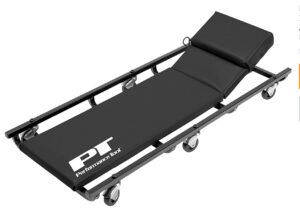
Available from Amazon, Performance Tool p/n W85005 ($63.06). These come in various flavors, but I have found mine to be a cherished upgrade to the shop and maintenance experience. Having the ability to raise the head and shoulder rest seems to make working under the fuselage and wings considerably more comfortable. It also makes it much easier to turn to either side to see and reach tools, fasteners and so on. I am confident that once you try an adjustable creeper you’ll throw rocks at your old flat one.
I hope there is value and interest found in this favorites list to spur thought and research in equipping your work area. While I’m hoping that there will be significant agreement, I’m sure that just about anyone would also have a slightly different take or perspective. Our respective shops are sure to be as unique and individual as our finished projects and that’s actually a good thing.







